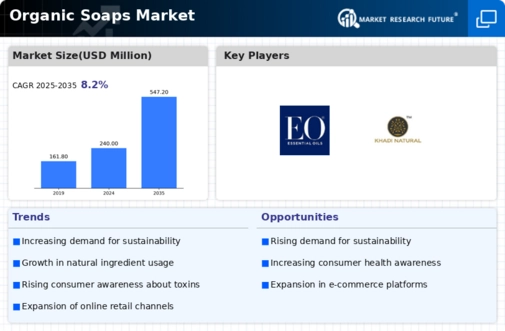Market Share
Organic Soaps Market Share Analysis
The market share positioning strategies within the Organic Soaps market play a pivotal role in defining the success of brands and influencing consumer preferences. One prevalent strategy is differentiation, where brands focus on unique selling propositions that set their organic soaps apart from competitors. This might employ new ingredients, like rare botanicals or exotic essential oils, as the “must-have” factor of the product that will attract the desired target consumers. Brands also use often a price positioning strategy by setting themselves in a certain part of the spectrum with pricing. While some organic soap companies emphasize that they are premium products which are made with organic ingredients and eco-friendly packaging, others try to convince that their products contain only the most natural components and are wrapped up carefully. This strategy targets consumers who are willing to bear higher costs provided the perceived quality is as superior. On the other hand, some of the brands take the strategy of offering affordable price, and this aims at the audiences who are cost-sensitive but not ready to compromise the organic and natural aspects of the products. Another important element is market segmentation whereby brands tailor their organic soap ahead of the target audience needs or preference. This can be done by producing skin customized products with different skin types like sensitive skin or oily skin variants among others. The brands that identify the diverse requirements of customers and strategically meet those customer needs have the opportunity to segment the market and ultimately gain brand loyalty from their targeted customers. The marketing and branding strategies, which also are very important, are also to be borne in mind. Many brands outlay much of their resources in designing a powerful brand image that appeal to their target market. It might be showcasing ethical sourcing principles, sustainable production, or the cruelty-free position. Through creation of a good brand image, companies are able to stand out in a crowded market and develop the trust of the clients seeking authenticity and transparency. Another key factor that should be considered is distribution channels which are other main elements in market share positioning within the organic soaps market.Some brands opt for exclusive distribution through specialty stores or high-end retailers, contributing to a perception of exclusivity. Others focus on widespread availability through mainstream retail outlets and online platforms, aiming for broader market reach. The choice of distribution channels is closely tied to the brand's overall positioning strategy and target customer base.





Leave a Comment